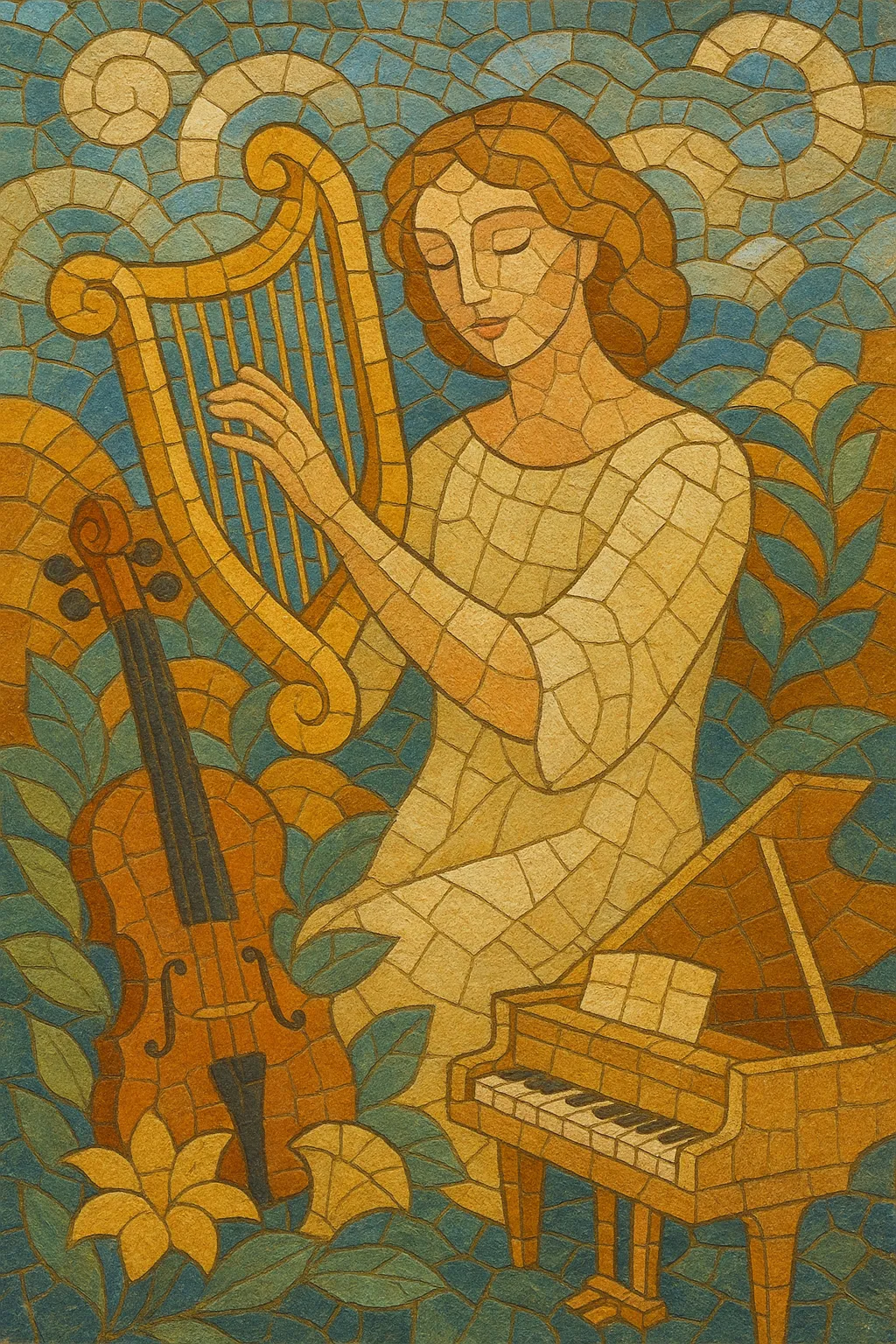
Easy listening is a lush, melodic, and unobtrusive style of popular orchestral music designed to be pleasant in the foreground and effortless in the background. It favors smooth textures, lyrical melodies, and gentle rhythms over virtuosic display or dense complexity.
Typical arrangements feature string sections, woodwinds, soft brass, vibraphone, harp, piano, subtle Latin or light swing percussion, and sometimes wordless choirs. Repertoire often consists of standards, film and television themes, and instrumental covers of contemporary hits, presented with polished studio production and wide stereo imaging.
The mood ranges from romantic and sentimental to breezy and exotic, prioritizing warmth, clarity, and relaxed pacing. Improvisation, if present, is restrained, with harmony that leans on jazzy extensions while staying consonant and approachable.
Light orchestral "mood music" associated with radio and film studios laid the groundwork for easy listening. Postwar high‑fidelity culture and the growth of domestic stereo systems encouraged labels to produce spacious, finely engineered records aimed at relaxed, stylish home listening. American traditional pop, big band ballads, and swing slowed down and softened, while British "light music" and Hollywood scoring practices contributed orchestration and polish.
By the late 1950s, bandleaders and arrangers such as Mantovani, Percy Faith, Ray Conniff, Henry Mancini, and Bert Kaempfert defined the sound: lush strings, choral "ooh‑ahh" pads, gentle rhythms, and elegant countermelodies. Billboard launched the Easy Listening chart in 1961 (later renamed Adult Contemporary), formalizing the category on American radio. The repertoire blended standards, film/TV themes, and instrumental versions of current pop tunes, while bossa nova, exotica, and breezy Latin patterns flavored many arrangements.
Through the 1970s the style absorbed soft-rock songwriting and smooth soul/jazz colors, helping to shape what would become the Adult Contemporary radio format. Orchestral pop units, studio orchestras, and branded ensembles (e.g., 101 Strings) continued to record covers alongside original themes, while library and production music repurposed the idiom for television, advertising, and retail environments.
Although synthesizers and changing pop tastes reduced mainstream prominence in the 1980s, easy listening’s aesthetics—polished arrangements, mellow tempos, refined harmonies—fed into smooth jazz, soft rock, and later "yacht rock". The 1990s–2000s saw a lounge/easy listening revival among crate‑diggers, cocktail culture, and soundtrack curators, while digital playlists and sample‑based producers rediscovered the genre’s plush textures and stereo spectacle.

